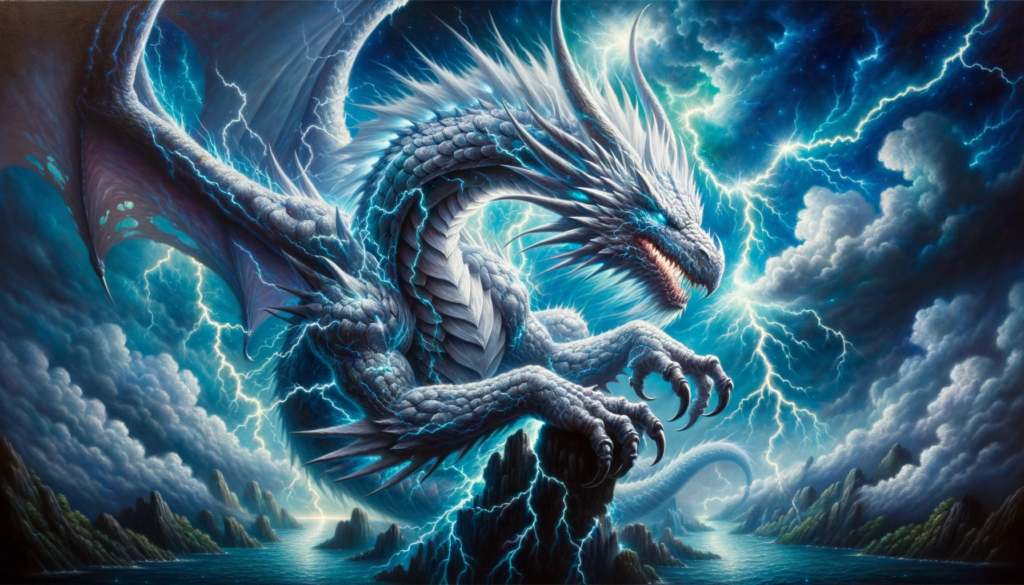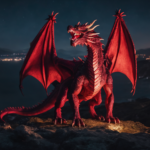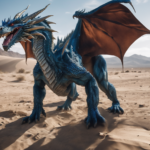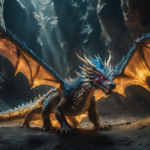Thunder Dragons – an Overview:
Thunder dragons are mythical creatures steeped in the legends and lore of cultures around the world. These majestic beings are closely associated with the element of thunder and lightning, known for their awe-inspiring appearance, control over storms, and their role as symbols of both power and transformation. While they exist solely within the realm of folklore and imagination, the tales of thunder dragons continue to electrify the human spirit with their stories of elemental might.
Physical Characteristics:
- Appearance: Thunder dragons are often depicted as imposing, dragon-like creatures with lithe, serpentine bodies built for navigating the stormy skies.
- Scales: Their scales shimmer with iridescent shades of silver, grey, and electric blue, resembling the metallic glint of lightning.
- Horns and Crests: Many of these dragons have formidable, horned crests along their heads, reminiscent of stormy cloud formations.
- Size: They are typically portrayed as large and imposing beings, capable of soaring through tumultuous skies.
Habitat:
Thunder dragons are primarily associated with stormy and tempestuous environments, often believed to dwell within the heart of thunderclouds or atop thunderhead-covered peaks.
Behaviour and Abilities:
- Electrokinesis: The defining ability of thunder dragons is their mastery over electricity and lightning. They can summon bolts of lightning, generate thunderous claps, and create electrifying storms at will.
- Flight: They are known for their ability to soar through stormy skies, riding the turbulent winds and unleashing their electrical powers.
- Roar of Thunder: Legends attribute a deafening roar to these dragons, a sound that can rival the mightiest thunderclaps and shake the earth below.
- Weather Manipulation: These mythical creatures are often said to have control over the weather, using their powers to both create and calm storms.

Cultural Significance of Thunder Dragons:
- Symbols of Power and Transformation: Thunder dragons symbolise the raw power of nature and the transformative energy of storms, embodying the forces of both destruction and renewal.
- Tales of Heroes: Stories of brave heroes who confront them serve as metaphors for confronting life’s challenges and harnessing inner strength.
- Modern Imagination: These dragons continue to captivate contemporary fantasy literature, art, and media, embodying the enduring allure of the mythical and the elemental.
Legends and Stories:
- Various cultures have their own interpretations of thunder dragon myths. In Chinese folklore, the dragon is often associated with thunder and rainfall, playing a vital role in the agricultural cycle.
- Stories of courageous adventurers who seek to tame or harness the power of thunder dragons have inspired tales of heroism and self-discovery.
Thunder Dragons – a Conclusion:
Thunder dragons are mythical creatures that symbolise the formidable forces of thunder and lightning. They serve as reminders of the untamed power of nature and the transformative potential of storms. While their existence remains confined to the realms of myth and fantasy, the tales of thunder dragons continue to electrify the human imagination, sparking stories of courage and embracing the elemental forces of the natural world.
For more great Dragon content please subscribe to our YouTube Channel or follow the Everything Dragon Instagram




